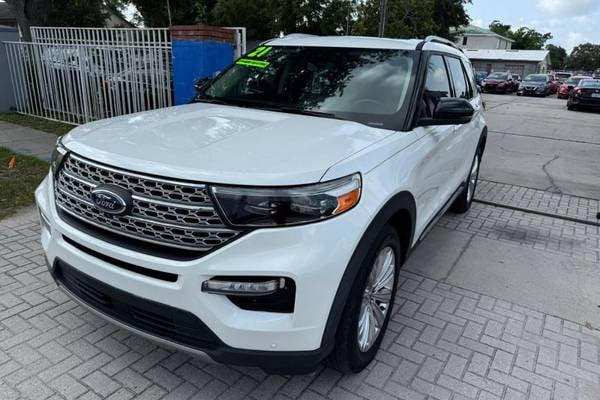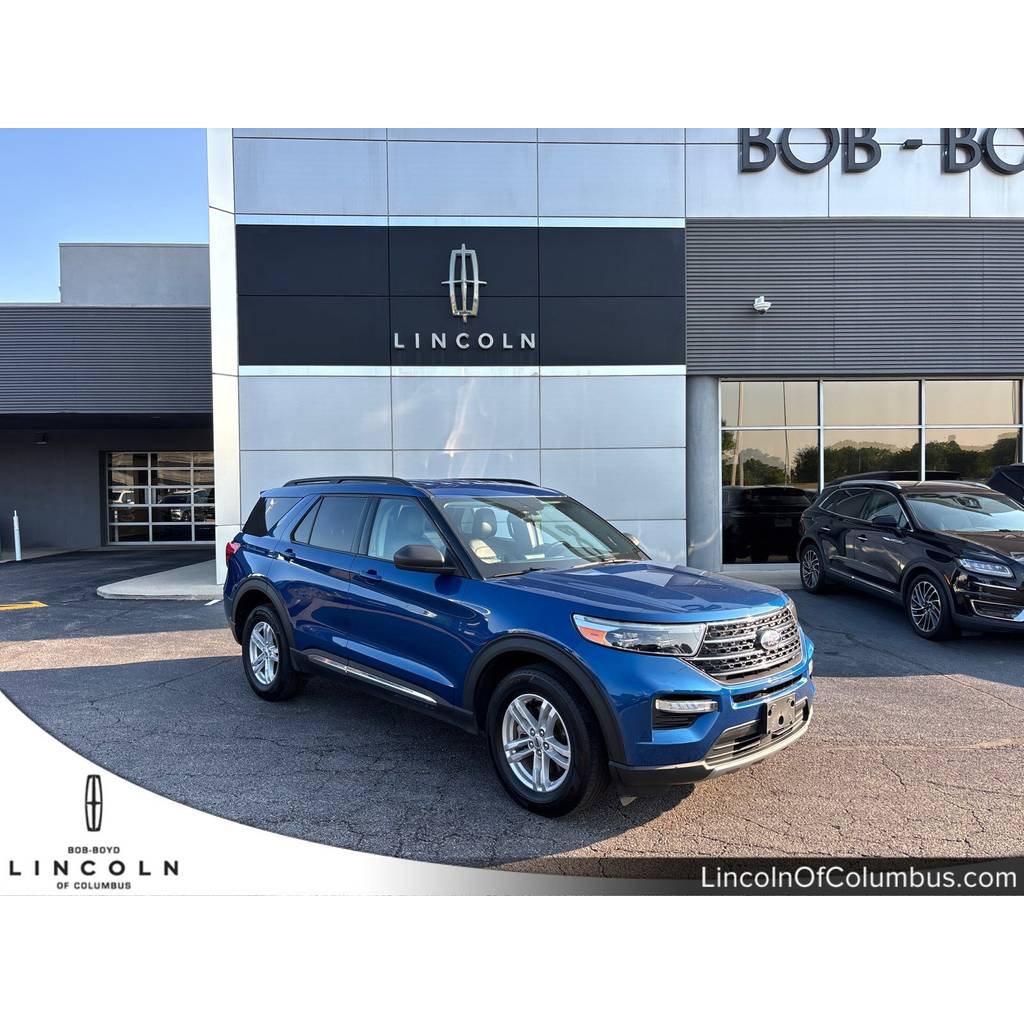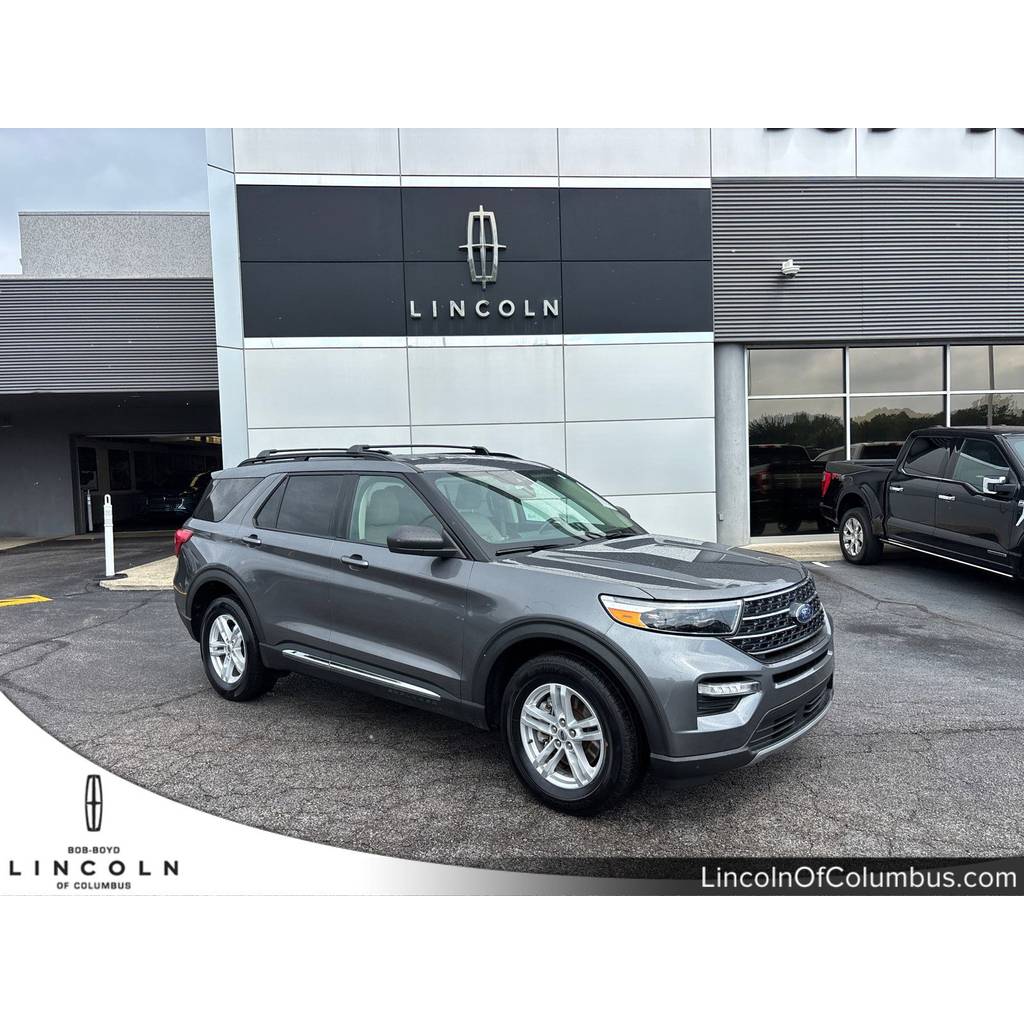- 56,187 miles
- No accidents, 1 owner, personal use
- 6 Seats, 23 City / 26 Hwy MPG
- Athens Chevrolet (199 mi away)
Close
Located in Athens, GA / 199 miles away from Waycross, GA
CLEAN LIMITED 4X4, CLEAN CARFAX, 3 ROWS LEATHER SEATING, POWER LIFT GATE, TRAILER SWAY CONTROL, DUAL POWER SUNROOF, TOW PACKAGE, POWER SEATS HEATED VE...
AutoCheck Vehicle History Summary
Accident Free Vehicle: Yes
Personal Use Only: Yes
History Provider: AutoCheck
Title Details: Clean Title
Salvage Vehicle: No
Frame Damage: No
Theft History: No
Lemon Status: No
Free History Report: No
Features and Specs:
25 Combined MPG (23 City/26 Highway)
Listing Information:
VIN: 1FM5K8FW2MNA11189
Stock: MNA11189
Certified Pre-Owned: No
Listed since: 07-07-2025- 38,774 miles
- Insurance loss reported, 2 owners, personal use only
- 6 Seats, 27 City / 28 Hwy MPG
- Jeisy Auto Sales (199 mi away)
Close
Located in Orlando, FL / 199 miles away from Waycross, GA
AutoCheck Vehicle History Summary
Accident Free Vehicle: No
Personal Use Only: Yes
History Provider: AutoCheck
Title Details: Issue reported
Salvage Vehicle: No
Frame Damage: No
Theft History: No
Lemon Status: No
Free History Report: No
Features and Specs:
27 Combined MPG (27 City/28 Highway)
Listing Information:
VIN: 1FM5K7FW7MNA00697
Stock: 43222
Certified Pre-Owned: No- 28,590 miles
- No accidents, 1 owner, personal use only
- 6 Seats, 25 City / 26 Hwy MPG
- Napleton's Volkswagen Of Sanford (183 mi away)
Close
Located in Sanford, FL / 183 miles away from Waycross, GA
2022 Ford Explorer Platinum Certified by Carfax - No Accidents, Certified by Carfax - One Owner, Android Auto / Apple Car Play, Backup Camera, Alloy W...
AutoCheck Vehicle History Summary
Accident Free Vehicle: Yes
Personal Use Only: Yes
History Provider: AutoCheck
Title Details: Clean Title
Salvage Vehicle: No
Frame Damage: No
Theft History: No
Lemon Status: No
Free History Report: No
Features and Specs:
26 Combined MPG (25 City/26 Highway)
Listing Information:
VIN: 1FM5K7HW0NNA10695
Stock: POE0695
Certified Pre-Owned: No
Listed since: 06-23-2025- 32,934 miles
- No accidents, 1 owner, personal use
- 6 Seats, 23 City / 24 Hwy MPG
- Greenway Ford (195 mi away)
Close
Located in Orlando, FL / 195 miles away from Waycross, GA
***Apple Car Play***Android Auto***, **3rd Row**, **Back-Up Camera**, **Blind Spot Monitoring**, **Dual Zone Climate Control**, **Forward Collision Wa...
AutoCheck Vehicle History Summary
Accident Free Vehicle: Yes
Personal Use Only: Yes
History Provider: AutoCheck
Title Details: Clean Title
Salvage Vehicle: No
Frame Damage: No
Theft History: No
Lemon Status: No
Free History Report: No
Features and Specs:
23 Combined MPG (23 City/24 Highway)
Listing Information:
VIN: 1FM5K8HWXNNA10564
Stock: NNA10564
Certified Pre-Owned: No
Listed since: 07-07-2025- $28,990good price$888 below market
- 64,705 miles
- No accidents, 2 owners, corporate fleet vehicle
- 6 Seats, 23 City / 26 Hwy MPG
- Carvana (In-stock online)
- Home delivery*
Close
Located in Chicago, IL / 822 miles away from Waycross, GA
At Carvana, we go miles beyond the extra mile. That's why we provide you with a convenient, fast, and hassle-free car buying experience that puts you ...
AutoCheck Vehicle History Summary
Accident Free Vehicle: Yes
Personal Use Only: No
History Provider: AutoCheck
Title Details: Clean Title
Salvage Vehicle: No
Frame Damage: No
Theft History: No
Lemon Status: No
Free History Report: No
Features and Specs:
25 Combined MPG (23 City/26 Highway)
Listing Information:
VIN: 1FM5K8FW5MNA10974
Stock: 2003806207
Certified Pre-Owned: No
Listed since: 06-07-2025 - $32,998great price$1,339 below market
- 54,604 miles
- 6 Seats, 23 City / 26 Hwy MPG
- CarMax (In-stock online)
- Transfer available from MO to GA*
Close
Located in Saint Peters, MO / 700 miles away from Waycross, GA
CarMax values transparency and wants you to love your next car, not settle on it. Certain vehicles may have unrepaired safety recalls. Check nhtsa.gov...
AutoCheck Vehicle History Summary Unavailable.
Features and Specs:
25 Combined MPG (23 City/26 Highway)
Listing Information:
VIN: 1FM5K8HW1MNA21841
Stock: 27112424
Certified Pre-Owned: No - $25,891good price$644 below market
- 57,150 miles
- No accidents, 1 owner, personal use only
- 6 Seats, 27 City / 28 Hwy MPG
- Seminole Chevrolet (178 mi away)
Close
Located in Sanford, FL / 178 miles away from Waycross, GA
Class III Trailer Tow Package, Hybrid Equipment Group 310A (Active Noise Cancellation, High-Series Brakes, Pedestrian Alert Sounder, and Wheels: 20 10...
AutoCheck Vehicle History Summary
Accident Free Vehicle: Yes
Personal Use Only: Yes
History Provider: AutoCheck
Title Details: Clean Title
Salvage Vehicle: No
Frame Damage: No
Theft History: No
Lemon Status: No
Free History Report: No
Features and Specs:
27 Combined MPG (27 City/28 Highway)
Listing Information:
VIN: 1FM5K7FW4MNA11446
Stock: SR301082A
Certified Pre-Owned: No
Listed since: 06-28-2025 - $28,799fair price$1,680 above market
- 48,719 miles
- No accidents, 1 owner, personal use only
- 6 Seats, 27 City / 28 Hwy MPG
- BMW of Tallahassee (129 mi away)
Close
Located in Tallahassee, FL / 129 miles away from Waycross, GA
more
AutoCheck Vehicle History Summary
Accident Free Vehicle: Yes
Personal Use Only: Yes
History Provider: AutoCheck
Title Details: Clean Title
Salvage Vehicle: No
Frame Damage: No
Theft History: No
Lemon Status: No
Free History Report: No
Features and Specs:
27 Combined MPG (27 City/28 Highway)
Listing Information:
VIN: 1FM5K7FW5MNA12170
Stock: 23P1039A
Certified Pre-Owned: No
Listed since: 06-04-2025 - $26,998fair price$491 above market
- 86,832 miles
- No accidents, 3 owners, personal use only
- 7 Seats, 27 City / 28 Hwy MPG
- CarMax (In-stock online)
- Transfer available from TN to GA*
Close
Located in Knoxville, TN / 339 miles away from Waycross, GA
CarMax values transparency and wants you to love your next car, not settle on it. Certain vehicles may have unrepaired safety recalls. Check nhtsa.gov...
AutoCheck Vehicle History Summary
Accident Free Vehicle: Yes
Personal Use Only: Yes
History Provider: AutoCheck
Title Details: Clean Title
Salvage Vehicle: No
Frame Damage: No
Theft History: No
Lemon Status: No
Free History Report: Yes
Features and Specs:
27 Combined MPG (27 City/28 Highway)
Listing Information:
VIN: 1FM5K7FW8MNA06427
Stock: 27547254
Certified Pre-Owned: No - 76,551 miles
- 1 accident, 1 owner, personal use only
- 6 Seats, 27 City / 28 Hwy MPG
- Yes Motor (192 mi away)
Close
Located in Orlando, FL / 192 miles away from Waycross, GA
AutoCheck Vehicle History Summary
Accident Free Vehicle: No
Personal Use Only: Yes
History Provider: AutoCheck
Title Details: Clean Title
Salvage Vehicle: No
Frame Damage: No
Theft History: No
Lemon Status: No
Free History Report: No
Features and Specs:
27 Combined MPG (27 City/28 Highway)
Listing Information:
VIN: 1FM5K7FWXMNA08292
Stock: A08292
Certified Pre-Owned: No
Listed since: 05-08-2025- $32,499good price$735 below market
- 31,746 miles
- No accidents, 1 owner, personal use
- 6 Seats, 27 City / 28 Hwy MPG
- Driveway (In-stock online)
- Home delivery*
Close
Located in Thousand Oaks, CA / 2,118 miles away from Waycross, GA
CarFax No Accidents Reported,CarFax 1-Owner,Green Vehicle,3rd Row Seat,Back-Up Camera,Blind Spot Monitor,Bluetooth,Brake Assist,Hands-Free Liftgate,He...
AutoCheck Vehicle History Summary
Accident Free Vehicle: Yes
Personal Use Only: Yes
History Provider: AutoCheck
Title Details: Clean Title
Salvage Vehicle: No
Frame Damage: No
Theft History: No
Lemon Status: No
Free History Report: No
Features and Specs:
27 Combined MPG (27 City/28 Highway)
Listing Information:
VIN: 1FM5K7FW8NNA02511
Stock: NNA02511A
Certified Pre-Owned: No - $26,590fair price$309 below market
- 89,576 miles
- No accidents, 1 owner, corporate fleet vehicle
- 6 Seats, 23 City / 26 Hwy MPG
- Carvana (In-stock online)
- Home delivery*
Close
Located in Charlotte, NC / 291 miles away from Waycross, GA
At Carvana, we go miles beyond the extra mile. That's why we provide you with a convenient, fast, and hassle-free car buying experience that puts you ...
AutoCheck Vehicle History Summary
Accident Free Vehicle: Yes
Personal Use Only: No
History Provider: AutoCheck
Title Details: Clean Title
Salvage Vehicle: No
Frame Damage: No
Theft History: No
Lemon Status: No
Free History Report: No
Features and Specs:
25 Combined MPG (23 City/26 Highway)
Listing Information:
VIN: 1FM5K8FW6NNA11598
Stock: 2003840925
Certified Pre-Owned: No
Listed since: 06-27-2025 - $31,681fair price$86 above market
- 41,435 miles
- No accidents, 3 owners, personal use only
- 6 Seats, 27 City / 28 Hwy MPG
- Arlington Toyota Jacksonville (80 mi away)
Close
Located in Jacksonville, FL / 80 miles away from Waycross, GA
REMAINDER OF FACTORY WARRANTY STILL APPLIES, BACKUP CAMERA, BLUETOOTH HANDS FREE, ANDROID AUTO, APPLE CARPLAY, POWER SEATS, MEMORY SEATS, PANORAMIC MO...
AutoCheck Vehicle History Summary
Accident Free Vehicle: Yes
Personal Use Only: Yes
History Provider: AutoCheck
Title Details: Clean Title
Salvage Vehicle: No
Frame Damage: No
Theft History: No
Lemon Status: No
Free History Report: No
Features and Specs:
27 Combined MPG (27 City/28 Highway)
Listing Information:
VIN: 1FM5K7FW8NNA10771
Stock: AY20915
Certified Pre-Owned: No
Listed since: 05-22-2025 - $28,990fair price$72 above market
- 73,924 miles
- No accidents, 1 owner, corporate fleet vehicle
- 6 Seats, 23 City / 26 Hwy MPG
- Carvana (In-stock online)
- Home delivery*
Close
Located in Charlotte, NC / 291 miles away from Waycross, GA
At Carvana, we go miles beyond the extra mile. That's why we provide you with a convenient, fast, and hassle-free car buying experience that puts you ...
AutoCheck Vehicle History Summary
Accident Free Vehicle: Yes
Personal Use Only: No
History Provider: AutoCheck
Title Details: Clean Title
Salvage Vehicle: No
Frame Damage: No
Theft History: No
Lemon Status: No
Free History Report: No
Features and Specs:
25 Combined MPG (23 City/26 Highway)
Listing Information:
VIN: 1FM5K8FW2NNA11579
Stock: 2003840924
Certified Pre-Owned: No
Listed since: 07-02-2025 - 24,168 miles
- No accidents, 1 owner, personal use only
- 6 Seats, 23 City / 24 Hwy MPG
- CarMax (In-stock online)
- Transfer available from UT to GA*
Close
Located in South Jordan, UT / 1,764 miles away from Waycross, GA
CarMax values transparency and wants you to love your next car, not settle on it. Certain vehicles may have unrepaired safety recalls. Check nhtsa.gov...
AutoCheck Vehicle History Summary
Accident Free Vehicle: Yes
Personal Use Only: Yes
History Provider: AutoCheck
Title Details: Clean Title
Salvage Vehicle: No
Frame Damage: No
Theft History: No
Lemon Status: No
Free History Report: No
Features and Specs:
23 Combined MPG (23 City/24 Highway)
Listing Information:
VIN: 1FM5K8HWXPNA04251
Stock: 27492047
Certified Pre-Owned: No- 28,578 miles
- No accidents, 1 owner, personal use only
- 6 Seats, 23 City / 26 Hwy MPG
- Carvana (In-stock online)
- Home delivery*
Close
Located in Indianapolis, IN / 629 miles away from Waycross, GA
At Carvana, we go miles beyond the extra mile. That's why we provide you with a convenient, fast, and hassle-free car buying experience that puts you ...
AutoCheck Vehicle History Summary
Accident Free Vehicle: Yes
Personal Use Only: Yes
History Provider: AutoCheck
Title Details: Clean Title
Salvage Vehicle: No
Frame Damage: No
Theft History: No
Lemon Status: No
Free History Report: No
Features and Specs:
25 Combined MPG (23 City/26 Highway)
Listing Information:
VIN: 1FM5K8FW5PNA04323
Stock: 2003855135
Certified Pre-Owned: No
Listed since: 07-03-2025
Consumer Reviews for the Ford Explorer
Check out before you buy this 2020 truck..😩🤬
Applied Filters5Active
Make & Model
Year
New / Used
Price & Payments
Price Rating
Body Type
Trim
Mileage
Accidents & History
Engine & Drivetrain
Exterior Color
Interior Color
Total Seating
Edmunds Review
Features
Options & Packages
MPG
* Delivery of any kind does not apply to Alaska and Hawaii. Contact the dealer for delivery details, restrictions and costs.



















